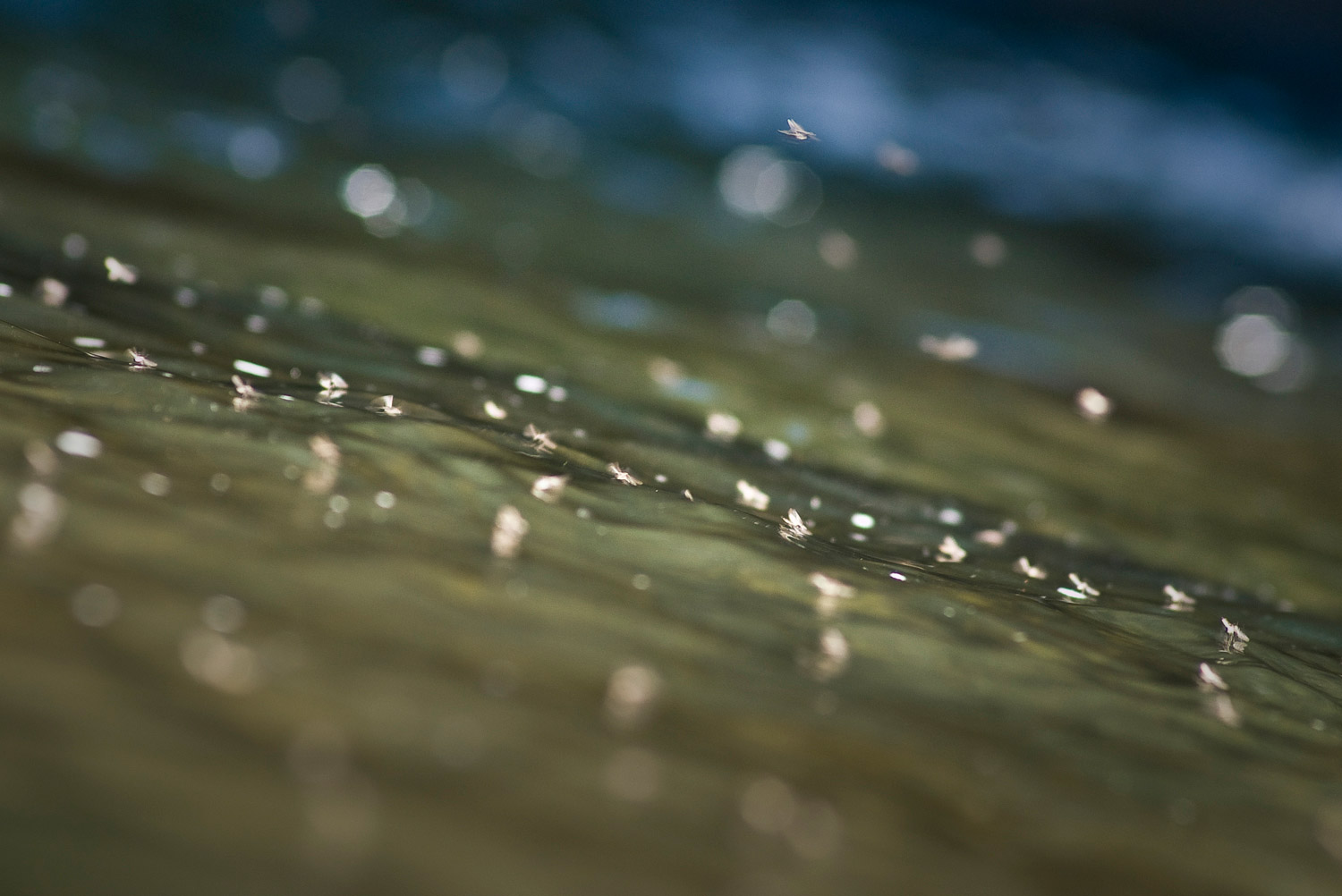Is that fly a nymph? That’s the question I got from a reader the other day.
A fair question from a guy who’s only fly fished for redfish and isn’t familiar with trout flies. A simple question with a very complicated answer. Complicated enough that I figured it deserved an explanation, and why not share it.
The fly in question was a midge pattern, so technically not a nymph.
The word “nymph” however, like so many words, shares two meanings. The literal (denotative) meaning is a juvenile mayfly or stonefly in the subsurface phase of its life cycle. The word is also used to refer to flies that imitate these insects. Since a midge starts its life as a larva rather than a nymph, the flies that imitate them are not technically nymphs.
The word nymph also has a conversational (connotative) meaning. It is often used to refer to flies that are dead drifted below the surface. A San Juan Worm or an egg pattern is often referred to as a nymph because of the way they are fished. Some folks will use the term “wet fly” for any fly fished below the surface but this is not correct either. Wet flies are a specific style of fly intended to be fished in a different manner. So describing the midge fly as a nymph, while inaccurate, is not necessarily wrong. It can be fished as a nymph, connotatively.
I’m not generally one to engage in exercises of semantics but I believe there is more at stake here than clarity of the word. I know that when I first became aware of midge patterns many years ago, I was reluctant to fish them because they were unfamiliar. Words like larva and pupa kept me away from these patterns and the fish who eat them. I would, for example, fish a caddis dry fly frequently but never a larva or pupa.
I don’t think you need to know the Latin names of the insects. That’s fine for the guys who get into it but in the words of Bob Dylan, “it ain’t me babe.” I have friends who are skilled and experienced fly fishermen who will spot Stenonema interpuntayum in the air and say, “the Light Cahills are hatching.” And can you blame them? I had to ask Kent for the Latin name just to write that sentence! I do however think a basic understanding of the insects we imitate is crucial. Trust me, this will be very basic.
The stages of a mayfly’s life cycle of interest to anglers are as follows. Nymph, the aforementioned subsurface juvenile. Emerger, the stage when the nymph rises to the surface and sheds his shuck. (it’s worth mentioning that for some insects this does not take place in the water.) Adult, the sexually mature insects which fly around our heads. Spinner, the adult who has mated and collapsed on the water to die. Stoneflies follow a very similar cycle.
Even the slightest thought on this life cycle will yield valuable information for the fly fisher. For example, notice that I describe the adult mayfly as flying around your head. This immediately begs some questions. Are you fishing enough emergers? How often does a fish get the chance to eat an adult? Should you be tying more cripple patterns?
Midges and caddis have a different life cycle but the basics, as they apply to the angler, are much the same. The larva, generally a small worm of sorts, is much like the nymph and is fished in the same way and under the same circumstances. The pupa is kind of like the emerger. It’s the phase when the larva becomes an adult. Hence the caddis emerger. The adult, same as the mayfly. I’m sure there are midge spinners or something close but I don’t know anyone who’s worked out that pattern.
So back to the readers question. The fly was technically a midge pupa, defined by its wing tied to represent the rising air bubble. It is very effective fished in the film when midges are hatching. (Another misnomer. They are emerging, not hatching.) This fly is however just as effective fished with split shot as a nymph. Simple answer.
The more you know about the insects you imitate, the more effective you will be as an angler. For example, knowing that stoneflies have a two-year nymphal cycle and thus are always present in streams where they live as nymphs, I generally employee a stonefly pattern when searching for fish. A tiny piece of information that I use effectively almost all the time.
There are a great many books on the subject, not least of which in Al Caucci and Bob Nastasi’s “Hatches II” which is very detailed and informative but reads like a text book. A wealth of information if you have the patience for it.
http://www.amazon.com/Hatches-II-Complete-American-Streams/dp/1592283225
A more digestible and brilliantly photographed version is the “Bugs of the Underworld” DVD by Ralph and Lisa Cutter. The videos below are from their YouTube channel. They are excerpts from the DVD. These videos are amazing! Incredibly informative and the photography is mind blowing. You can check out the Cutter’s videos, books and fly fishing school at http://flyline.com/
Louis Cahill Gink & Gasoline www.ginkandgasoline.com hookups@ginkandgasoline.com
 Sign Up For Our Weekly Newsletter!
Sign Up For Our Weekly Newsletter!


“The word ‘nymph’ however, like so many words, shares two meanings. The literal (denotative) meaning is a juvenile mayfly or stonefly in the subsurface phase of its life cycle.”
Its worth commenting that there are other aquatic juvenile insect forms – nymphs – beyond stoneflies and Mayflies.
Of course for trout-specific discussions, that about sums it up.
I’ve always liked the quote that I’m about to butcher…
“The things trout eat are about 3/8″ long, brown, and fuzzy.”
This puts the cats hairball into a new light, and eases the nymph-worry.